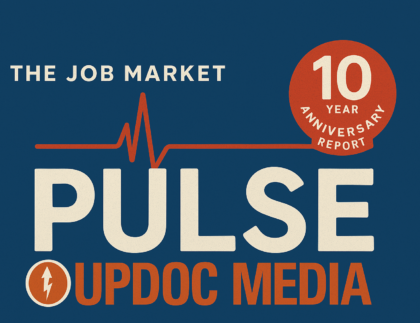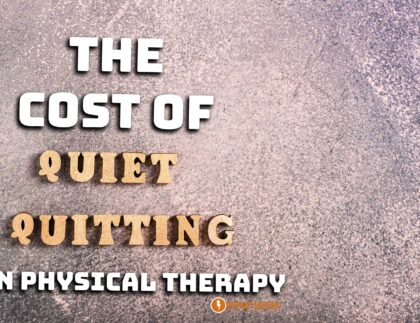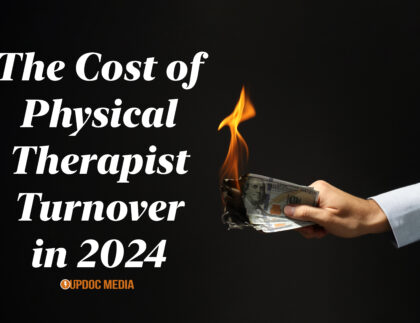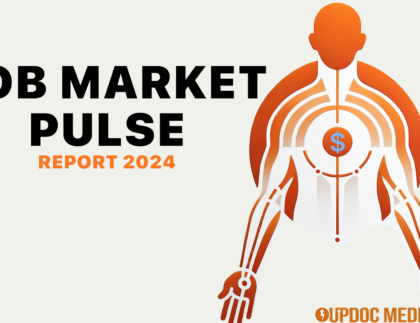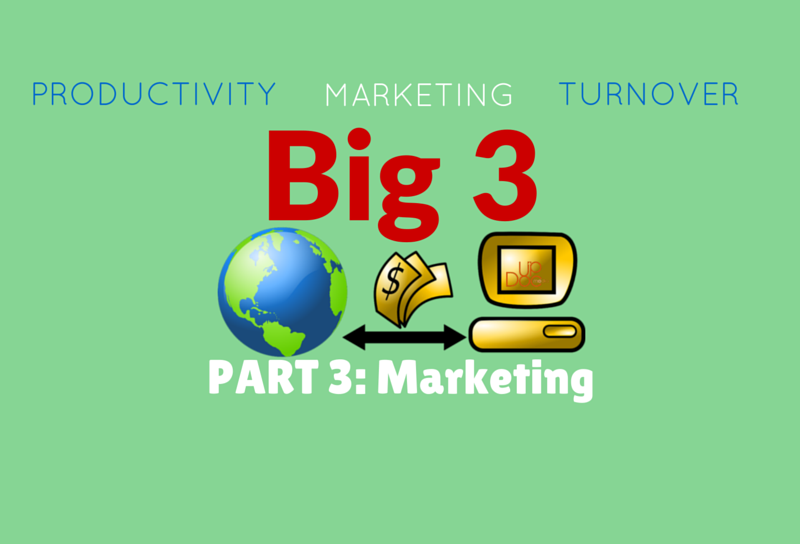
As it pertains to physical therapy, marketing has always been a problem. We don’t know how to market ourselves. We don’t know how to market ourselves to our customers, to our referral sources, to our colleagues, to ourselves, to our allies, to our partners, to our payers… we simply don’t know how to communicate our value. And, we when we attempt to do this, we end up using our own jargon versus the preferred language of our audience.
The culture of Physical Therapy has long been one of introspection; one that values clinical excellence; and, one which is obsessed with what we should be. While this has made us clinically excellent as a culture, it has made us forget about our customers, their wants, and their views upon who we should become.
So, without further ado…!
I think the biggest mistakes in marketing are found in the actionables. Just about everywhere I look, all I see are articles, blogs, podcasts, broadcasts, etc. etc. etc. on actionables. Now, there is nothing is business if we do not act. However, I think that in marketing, it is too easy to act too quickly — without the proper strategy, without the proper analysis, and without the proper timing in execution.
So, let’s start at the very beginning with: Strategy.
Strategy.
Strategy is the map, the plan, the big picture view of how you intend on generating demand for your business. When done correctly, strategizing requires rigorous planning through disciplined frameworks, cross-checked with finances, operations, and analysis. It is through strategic planning that businesses can time out their execution for an optimal market response. After all, why sell a good product if no one is interested? Why get people interested if you don’t have enough product? Why push product attributes you are interested versus the product benefits that a customer is interested in buying for?
In physical therapy, the strategy is typically backwards. Businesses figure out what they have to offer and try to frame it for the tastebuds of the consumers out there. It’s kind of like a restaurant going to town offering burgers and trying to convince people to eat burgers rather than seeing what that town already likes to eat and providing that instead. Therefore, it should be that businesses figure out what types of tastes consumers have, then market specifically for those tastes, preference, and price points.
In my Branding With Clinical Precision webinar, I talk about branding businesses based on the jobs your customers need to have done (#JobsToBeDone), the gains they are looking for through those jobs being done, and the pains they are looking to get alleviated. Precisely presenting a marketing mix to your customer base, using their language, highlighting what they want — this is the best way to market strategically. So, in physical therapy, we shouldn’t be marketing our skill sets or the types of treatments that we are able to perform; we should be marketing the experiences, gain makers, pain killers, and results our customers are shopping for — the specific jobs they are looking to have filled.
Next comes the analytical portion.
Analysis.
Numerical and financial analysis is the glue that holds strategy together. One cannot exist without the other. Conceptual awesomeness in strategy can mean very little if a company’s ability to respond quickly to the market is limited. How would you know one way or the other? Well, you’d know only through precise analysis.
Whether you are trying to figure out how to market to hospital administrators, health system executives, physicians, direct-to-consumer, via digital means, or through guerrilla marketing — all these avenues have one thing in common:
If you wish to repeat your success, you must measure it first.
This is true in marketing for a public relations crisis, saving a campaign from calamity, optimizing an email marketing campaign, fine tuning your social media presence, or simply tracking what is happening at the end-user facing aspect of your business. After all, marketing is both about internal and external concerns. It is just as important to have a marketing strategy for lead generation as it is for managing customer loyalty. It is just as important to have marketing campaigns for attracting talent as it is for maximizing future pipelines.
The fact is, most of physical therapy marketing is very PRN and ad hoc. Nothing is all that much planned out. Much of it is at whim, at best guess, and at happenstance. When we think about the professional goals we have for our industry: things like direct access, physician status, autonomy, healthcare leadership, prescription rights, etc. All these things are interwoven in a battlefront mix of marketing and legislation.
- Do you wish to promote the Physical Therapist in the Emergency Department (#PTinED)? You must market for it.
- Do you wish to finally elevate the Physical Therapist as a primary care provider? You must market for it!
- Do you wish to capture all that revenue potential in serving your neighborhood residents who have no clue who you are, what you do, and how you can help them? You must market for it.
- Do you wish to fill gaps in turnover faster than you’ve been able to do in the past? You must market for it.
- Do you wish to keep up a competitive edge in times of declining payment rates? You must market for it!!!
How?!
That’s what marketing strategy and analysis is all about. There is no one size fits all in marketing. And, there certainly is no quick fix. Every marketing success has always been at the hands of highly intentional, highly precise, and very well timed execution. But, it starts with perspective. It starts with standing in the shoes of the consumer, of the payer, of the referral source, of the community, and of the healthcare value chain.
Marketing has to do with the products we bring, not the benefits we feel they offer. Marketing has to do with presenting what the consumer thinks is cool… not what we think is clinically fascinating. Marketing has to do with intentionally sitting down, slating out a plan, creating a budget, a time table, feedback loops, and contingency plans.
In physical therapy, we need to look waaaaay beyond getting more bodies through the front door. We need to start thinking about how to generate increased demand and industrial growth for our own businesses as well as the profession at large. We need to think about how we market ourselves to legislators, industry leaders, executives, and the bevy of consumer voices.
We need to look beyond the goals we were trying to reach a decade ago. We need to start targeting the opportunities; setting our sights on what our consumer base will want in the next year, three years, five years, and the coming decade.
We need to market today for the demands of tomorrow.
We need to drive demand and fill needs as, if not before, our customers realize they have it — filled by our service production, met by our expertise, gains made by our brands, pains widely alleviated by our profession.
The final curse of the Big 3… Marketing. For physical therapy, we march into the future as we market in manners of the past. That, is our problem. We do so, because we are obsessed with our own interests. What we should be obsessed with is fulfilling, in an extraordinary service experience, the needs of our customers — before, during, and after they are even aware they need us.
THAT… is where physical therapy marketing needs to be.
The very needs to be filled, is equated with our physical therapy brand.

